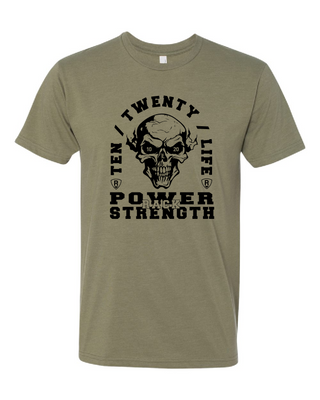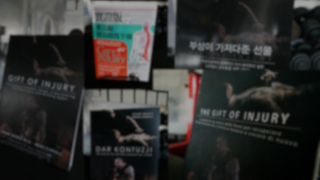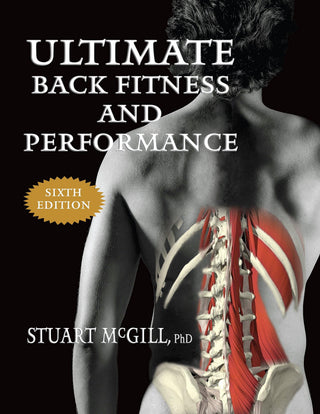Ultimate Back Fitness and Performance by Dr. Stuart McGill (6th Edition)
- Unit price
- / per
For bulk orders (10 books or more) contact customerservice@powerrackstrength.com for bulk order rates!
Get the latest scientific evidence on back exercise - what helps and what hurts, and why.
“Ultimate Back Fitness and Performance” (sixth edition, 2017) is geared for trainers, coaches, athletes, the lay public and anyone interested in a higher level of understanding to create better progression to enhance performance with injury resilience.
Ultimate Back Fitness and Performance provides the evidence base to design and prescribe the most appropriate exercise programs for the back. Professor McGill's unique approach is based upon years of scientific research into back function of injured people through to elite athletes. His expertise is sought by governments, corporations, professional sports teams and athletes worldwide. A complete description of a 5 stage program is provided.
Examples are provided for each stage within a back pain rehabilitation program together with performance enhancement programs for athletes. Beginning with recognizing and re-patterning perturbed motor programs and progressing to the enhancement of stability/mobility, then endurance, the final stages continue with strength, power and agility training. Each step is well illustrated and instructive. Added to this are general approaches to assess the demands of individual activities and sports and how to identify the critical components that need specific focus in an individual's back. Dr McGill's style makes for an easy read of this thorough and rich resource.
If you just want pictures of exercises, get another book. If you want to know WHY, HOW and WHEN specific exercises work and how to design a logical progression, then this is the book for you
Be prepared for a new approach. Ultimate Back Fitness and Performance is a myth buster!
Transition training guidelines are described and the concept of “superstiffness” is introduced with new exercises based on his recent studies. Tips to employ this effective principle are also described with examples – eliminate energy leaks, conquer sticking points, enhance speed and achieve ultimate performance. Practical sections include the "squat clinic". Typical of Dr McGill's writings, the guidance is evidence-based.
Note that this book is intended to assist in the design of a wider spectrum of the best exercise progression to enhance back fitness in the safest way. It was written for savvy lay people and professionals alike.
Ultimate Back Fitness and Performance by Dr. Stuart McGill (6th Edition)
- Unit price
- / per
Adding product to your cart
You may also like
For bulk orders (10 books or more) contact customerservice@powerrackstrength.com for bulk order rates!
Get the latest scientific evidence on back exercise - what helps and what hurts, and why.
“Ultimate Back Fitness and Performance” (sixth edition, 2017) is geared for trainers, coaches, athletes, the lay public and anyone interested in a higher level of understanding to create better progression to enhance performance with injury resilience.
Ultimate Back Fitness and Performance provides the evidence base to design and prescribe the most appropriate exercise programs for the back. Professor McGill's unique approach is based upon years of scientific research into back function of injured people through to elite athletes. His expertise is sought by governments, corporations, professional sports teams and athletes worldwide. A complete description of a 5 stage program is provided.
Examples are provided for each stage within a back pain rehabilitation program together with performance enhancement programs for athletes. Beginning with recognizing and re-patterning perturbed motor programs and progressing to the enhancement of stability/mobility, then endurance, the final stages continue with strength, power and agility training. Each step is well illustrated and instructive. Added to this are general approaches to assess the demands of individual activities and sports and how to identify the critical components that need specific focus in an individual's back. Dr McGill's style makes for an easy read of this thorough and rich resource.
If you just want pictures of exercises, get another book. If you want to know WHY, HOW and WHEN specific exercises work and how to design a logical progression, then this is the book for you
Be prepared for a new approach. Ultimate Back Fitness and Performance is a myth buster!
Transition training guidelines are described and the concept of “superstiffness” is introduced with new exercises based on his recent studies. Tips to employ this effective principle are also described with examples – eliminate energy leaks, conquer sticking points, enhance speed and achieve ultimate performance. Practical sections include the "squat clinic". Typical of Dr McGill's writings, the guidance is evidence-based.
Note that this book is intended to assist in the design of a wider spectrum of the best exercise progression to enhance back fitness in the safest way. It was written for savvy lay people and professionals alike.



